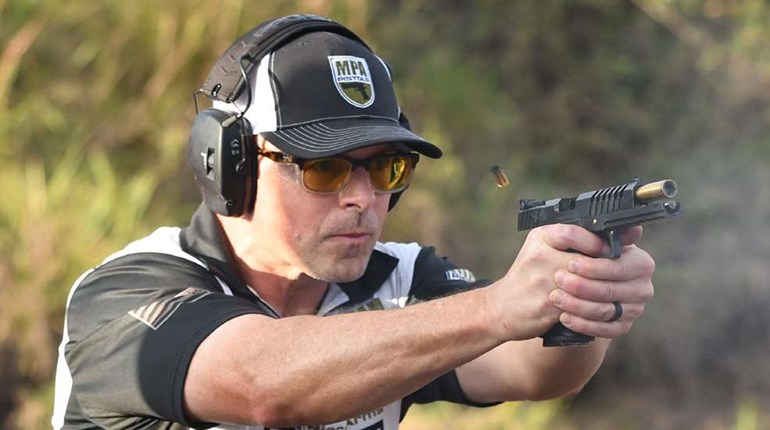
While recently instructing a close-quarters defensive pistol class, one of my students asked me about the history of pistol barrels. Although imparting some cursory knowledge for the benefit of the class, the query spurred me to delve deeper down the rabbit hole. Turns out that the history of pistol gun barrels is a fascinating chronicle.
Spanning from the crude handgonnes of the Middle Ages to the precision-engineered barrels of today’s high-tech pistols, the development of pistol barrels has played a critical role in shaping the effectiveness, accuracy and reliability of handguns.
The origins of handgun barrels can be traced back to the primitive hand cannons and arquebuses of the 14th and 15th centuries. These early firearms featured simple, smoothbore barrels made from wrought iron or bronze. The barrels were often short and rudimentary, with little consideration for accuracy or precision. The primary goal was to create a handheld weapon that could launch a projectile with explosive force.
One of the most significant advancements in the history of gun barrels was the introduction of rifling. The creation of spiral grooves inside the barrel, which impart a spin to the projectile as it is fired, was a remarkable advancement. Spin stabilizes the bullet’s flight, significantly enhancing accuracy and range. The concept of rifling dates to the late 15th century, but it wasn’t until the 16th and 17th centuries that rifled barrels began to see widespread use.
During the 17th and 18th centuries, flintlock pistols became the predominant sidearm for military and civilian use. Flintlock pistols featured longer barrels compared to earlier hand cannons, and were often made from higher-quality steel. The improved metallurgy and manufacturing techniques of the time allowed for more consistent and reliable barrels. Rifling became more common, further enhancing the accuracy of these firearms.
The 19th century saw several pivotal developments in handgun technology, including the introduction of percussion caps and the advent of revolvers. Percussion caps replaced the flintlock mechanism, providing a more reliable and weather-resistant ignition system. Revolvers, pioneered by inventors like Samuel Colt, featured multiple barrels or a rotating cylinder with multiple chambers, allowing for rapid successive shots.
The barrels of 19th-century revolvers were typically rifled and made from steel benefiting from advancements in metallurgy and machining. The precision and durability of these barrels were critical to the success and popularity of revolvers, which became the preferred sidearm for military, law enforcement, and civilian use.
The early 20th century marked the rise of semi-automatic pistols, which revolutionized handgun design and performance. Semi-automatic pistols use the energy from firing a round to cycle the action and chamber the next round, allowing for faster and more efficient shooting. This era saw the introduction of iconic pistols such as the Colt M1911, designed by John M. Browning.
Modern Manufacturing Makes Its Mark
Post World War I handguns like the Browning Hi-Power and the Walther P38 emerged as significant firearms. The barrels of these pistols featured advancements in rifling and material science, reflecting the need for mass production without compromising quality. Throughout the world wars, manufacturing processes were refined to ensure that each barrel met stringent standards, essential for the pistols' performance in diverse battle environments.
Following World War II, the focus on pistol development shifted towards civilian use and law enforcement. The proliferation of firearms for self-defense, sport shooting and police work required further refinements in barrel technology to cater to these varied applications.
The demand for reliable, accurate pistols for personal protection and recreational shooting led to innovations in barrel design and materials. Manufacturers experimented with different alloys and heat treatments to produce barrels that were not only durable but also capable of maintaining consistent accuracy over prolonged use. The rise of competitive shooting sports also drove the need for high-precision barrels.
Experimental development of new materials, such as stainless-steel alloys and polymer composites, has revolutionized pistol-barrel construction. These materials offer superior strength, corrosion resistance and reduced weight, contributing to the overall performance and handling of modern pistols. High-strength polymers, used in conjunction with metal barrels, have also led to the creation of hybrid designs that balance durability and weight.
Innovations in rifling, such as polygonal rifling, have further enhanced the performance of pistol barrels. Polygonal rifling offers several advantages over traditional rifling, including improved gas sealing, increased barrel life and easier maintenance. This type of rifling has been adopted by several leading manufacturers and is favored for its ability to maintain accuracy while reducing fouling.
Picking Up The Thread
One of the key innovations in modern pistol barrels is the introduction of threaded barrels. These barrels allow for the attachment of suppressors, compensators, and other muzzle devices, providing shooters with the flexibility to modify their pistols for different applications. Threaded barrels are particularly popular among competitive shooters and tactical users who require enhanced performance and versatility.
The concept of interchangeable barrels has also gained traction, allowing shooters to switch between different calibers and barrel lengths on the same pistol frame. This modularity enhances the versatility of the handgun, making it suitable for a wider range of activities, from concealed carry to target shooting.
Ranging from the simple smoothbore barrels of early hand cannons to the sophisticated, precision-engineered barrels of today, each advancement has contributed to enhanced pistol performance, accuracy and reliability.
Looking toward the future, the ongoing integration of advanced materials, manufacturing techniques and smart technologies promises to further elevate the capabilities of pistol barrels, ensuring they remain at the cutting edge of handgun design and performance.

































